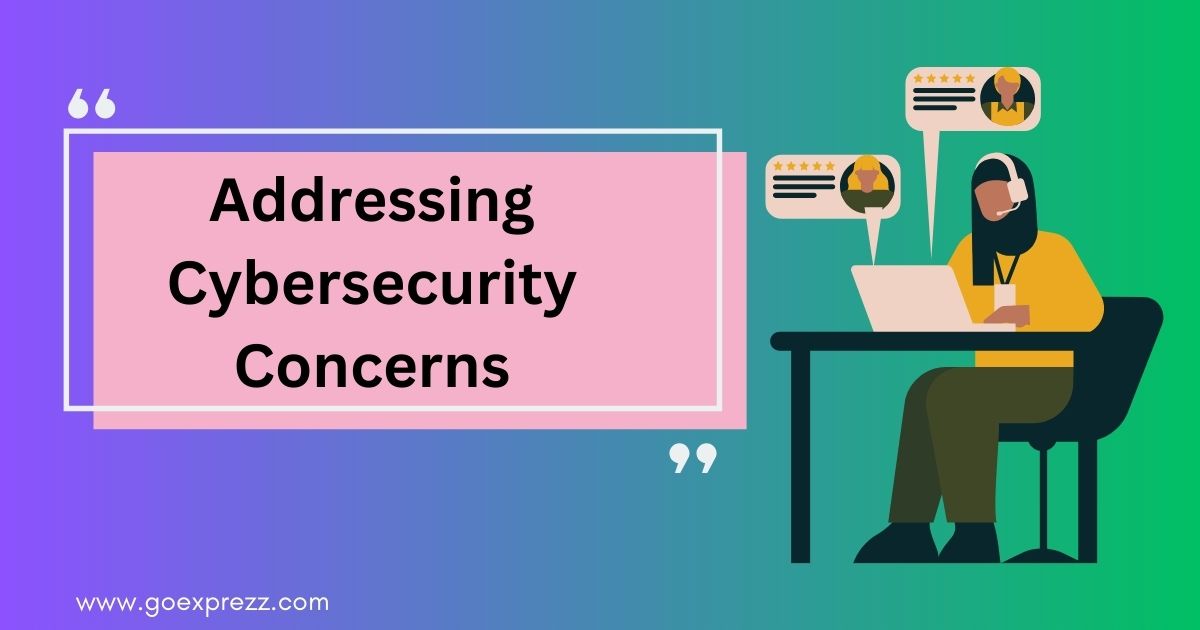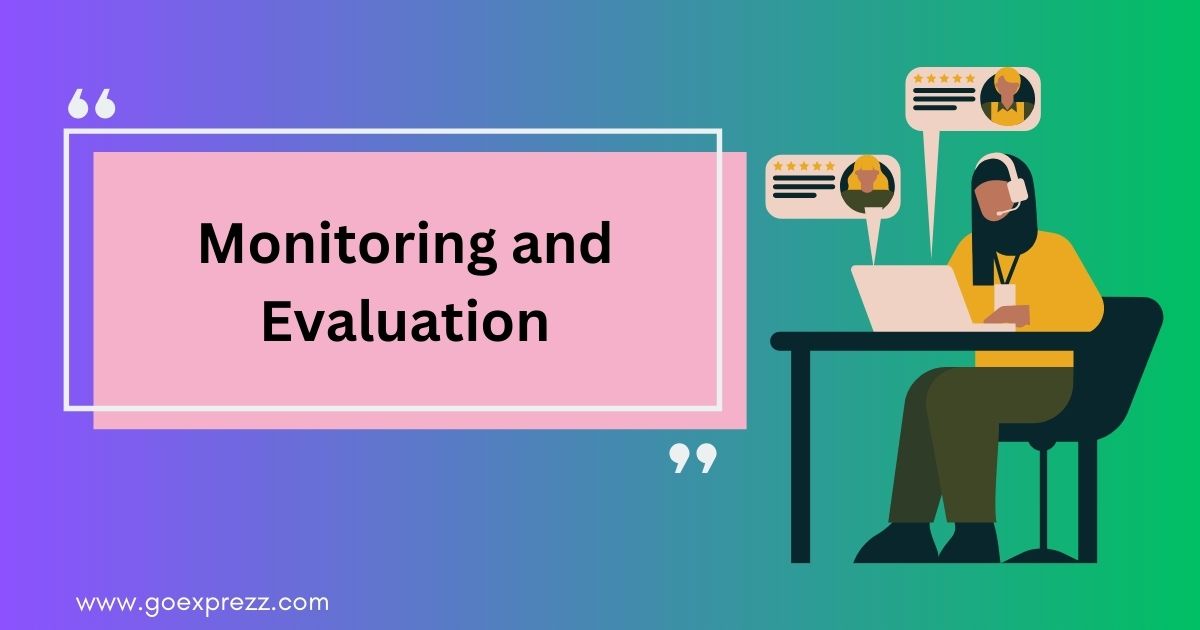The idea of remote work has grown in popularity in today’s connected and fast-paced society. Working from anywhere gives individuals freedom and many advantages, but it also presents particular difficulties for companies.
Assuring ongoing operations and maintaining productivity in the face of unforeseen disruptions is one of the key issues. An effective business continuity plan for remote workers can be useful in this situation.
A business continuity plan for remote workers is a comprehensive strategy that specifies the steps to be taken in the case of disruptive occurrences in order to lessen the effect on daily operations.
It entails identifying hazards, setting up channels of communication, granting remote access to vital resources, encouraging collaboration and productivity, addressing cybersecurity issues, and creating backup plans.
Businesses may successfully handle interruptions, preserve their operations, and guarantee uninterrupted production even in the most trying situations by putting in place a strong business continuity plan.
In this post, we’ll examine the essentials of a business continuity plan for remote workers, providing best practices and techniques to assist companies in adjusting to and thriving in a constantly shifting work environment.
Understanding the Business Continuity Plan
Imagine a scenario where unforeseen circumstances strike your business—a natural disaster, a sudden technology failure, or a global pandemic. How do you ensure that your operations continue seamlessly, without any disruptions?
This is where a Business Continuity Plan (BCP) comes into play.

Simply put, a business continuity plan for remote workers is your organization’s roadmap to navigate through unexpected events. It’s a comprehensive document that outlines strategies and procedures to minimize the impact of disruptions and maintain essential functions.
It acts as your safety net, ensuring that your business stays afloat even when faced with challenging situations.
The first step in understanding a BCP is identifying the critical functions and resources your business relies on.
This includes your personnel, technology systems, data backups, and physical infrastructure. By conducting a thorough risk assessment, you can pinpoint vulnerabilities and prioritize the areas that need protection the most.
Effective communication is key during disruptions. Your BCP should establish clear communication channels and protocols to keep everyone informed—employees, stakeholders, and customers.
Whether it’s utilizing reliable communication tools or setting up notification systems, effective communication ensures that everyone stays in the loop.
In today’s remote work environment, providing remote access to essential resources is vital. Your BCP should address secure ways to enable remote access to critical systems, data, and applications.
This may involve implementing virtual private networks (VPNs) and other security measures to protect sensitive information while allowing employees to work from anywhere.
Regular testing and drills are essential to fine-tune your BCP. Simulating different scenarios helps identify any gaps or areas for improvement, allowing you to refine your response strategies.
It’s also important to review and update your BCP regularly to keep pace with evolving risks and changing business needs.
By comprehending the business continuity strategy, you give your company the resources it needs to function normally under any circumstance.
It’s about protecting your business operations, your staff, and the confidence of your clients. Spend the time and effort necessary to create a thorough BCP because it will be your key to success and resilience no matter what obstacles you face.
Assessing Risks and Vulnerabilities
It’s critical to proactively identify and manage possible risks and vulnerabilities that might have an impact on your firm in today’s changing business environment. You may build measures to protect your company and preserve its resilience in the face of risks by performing a comprehensive examination.

Finding possible dangers that might endanger your operations is the first step in risk assessment.
These dangers might include everything from cyberattacks, data breaches, and even supply chain disruptions to natural calamities like floods or earthquakes. You can more effectively plan for these hazards if you are aware of them.
It’s critical to assess the hazards’ possible impact on your company once you’ve recognized them. Think about how these risks can impact your business’s operations, finances, reputation, and clientele.
You may better allocate resources and organize your response efforts with the aid of this evaluation.
In the current context, doing a risk assessment particularly for remote work situations is essential. Determine the particular risks that remote work poses, such as issues with data security, potential communication chasms, or dependency on outside services.
You may take steps to reduce the related risks by addressing these vulnerabilities head-on.
To assess risks and vulnerabilities effectively, involve key stakeholders and subject matter experts from various departments within your organization.
Their insights and expertise will provide a comprehensive understanding of the risks you face and help you develop targeted mitigation strategies.
Regularly reviewing and updating your risk assessment is essential, as the business landscape evolves and new risks emerge. Stay informed about industry trends, regulatory changes, and emerging threats to ensure that your risk assessment remains relevant and up to date.
Establishing Communication Channels
In today’s interconnected world, effective communication lies at the heart of successful remote work. When your team members are dispersed across different locations, establishing clear and reliable communication channels becomes essential for seamless collaboration and productivity.
Let’s explore how you can create effective communication channels in a remote work environment.
First and foremost, choose communication tools that align with your team’s needs and preferences. Whether it’s instant messaging platforms, video conferencing software, or project management tools, find the right combination that enables smooth information sharing and collaboration.
Consider factors like ease of use, security features, and compatibility with different devices and operating systems.

Establishing communication protocols and guidelines is equally important. Define expectations for response times, availability, and preferred methods of communication.
This helps avoid miscommunication and ensures that everyone is on the same page. Clear guidelines also help remote team members understand when and how to escalate issues or seek assistance.
Encourage open and transparent communication within your remote team. Create a culture where team members feel comfortable sharing their ideas, concerns, and progress updates.
Regularly scheduled team meetings, virtual brainstorming sessions, and one-on-one check-ins can foster connection and build trust among team members.
While written communication is essential, don’t underestimate the power of face-to-face interactions.
Utilize video conferencing tools for team meetings, project kick-offs, and collaborative discussions. Seeing each other’s facial expressions and body language helps build rapport and enhances understanding.
In a remote work environment, it’s crucial to establish communication channels beyond work-related matters.
Encourage informal communication channels, such as virtual watercooler chats or dedicated chat channels for non-work conversations. These informal interactions foster a sense of community and help remote team members connect on a personal level.
Regularly evaluate the effectiveness of your communication channels and make adjustments as needed.
Seek feedback from your remote team members to understand their communication needs and challenges. Embrace a growth mindset and be open to trying new tools or approaches that enhance collaboration and streamline communication.
Providing Remote Access to Essential Resources
The ability to access essential resources remotely has transformed the way we work. Enabling remote access to critical systems, data, and resources is essential for empowering productivity and ensuring seamless operations, regardless of where your team members are located.
Let’s explore how you can provide remote access to essential resources effectively.

The first step is to identify the essential resources your team needs to perform their tasks efficiently. This includes access to necessary software applications, databases, shared files, and communication platforms.
Consider the specific needs of each team member and ensure they have the tools required to carry out their responsibilities.
Implement secure remote login and authentication measures to protect sensitive information while allowing remote access. Utilize virtual private networks (VPNs) to establish secure connections, encrypt data transmission, and safeguard against potential cybersecurity threats.
By prioritizing data security, you create a safe environment for remote team members to access resources.
Regularly review and update access permissions to maintain data security. Ensure that only authorized individuals have access to sensitive information and adjust permissions as team members change roles or responsibilities.
This proactive approach minimizes the risk of data breaches and maintains data integrity.
Provide remote team members with clear instructions on how to access essential resources. Document step-by-step guidelines, create training materials, or even develop video tutorials to ensure everyone understands the process.
This empowers team members to work independently and reduces dependency on IT support for routine access needs.
Encourage the use of cloud-based solutions and collaborative platforms to enhance remote access and collaboration.
Cloud storage allows team members to access files from anywhere, facilitating seamless information sharing and real-time collaboration. Choose platforms that offer robust security features and align with your team’s collaboration needs.
Regularly test and monitor the remote access infrastructure to identify any potential issues or performance bottlenecks. Conduct user acceptance testing to ensure that remote access solutions work seamlessly for all team members.
Address any technical challenges promptly to minimize disruptions and optimize remote access.
Supporting Remote Collaboration and Productivity
Fostering collaboration and maintaining productivity among team members is essential for the success of any organization.
When your team is spread across different locations, supporting remote collaboration becomes paramount. Let’s explore some strategies to ensure seamless teamwork and enhance productivity in a remote work environment.

Embrace collaboration tools that enable real-time communication and collaboration. Utilize video conferencing platforms for virtual meetings, screen sharing, and brainstorming sessions.
Instant messaging and team collaboration platforms facilitate quick and efficient communication, allowing team members to connect and collaborate effortlessly.
Establish clear communication channels for team projects and assignments. Define expectations for project updates, progress tracking, and deadlines.
Encourage regular check-ins and status updates to keep everyone informed and aligned. By fostering open and transparent communication, you create an environment where ideas can flourish and collaboration can thrive.
Encourage virtual collaboration through shared document repositories and project management platforms.
Cloud-based storage solutions enable team members to access and collaborate on shared files in real-time. Project management tools help streamline workflows, assign tasks, and track progress, ensuring everyone stays on the same page.
Promote virtual teamwork through regular virtual team-building activities and informal interactions.
Virtual coffee breaks, virtual team lunches, or virtual team-building exercises foster a sense of camaraderie and strengthen relationships among team members. These informal interactions contribute to a positive team culture and enhance collaboration.
Recognize and celebrate achievements, both big and small, to boost morale and motivation. Acknowledge the contributions of remote team members and highlight their successes in team meetings or through virtual platforms.
Positive reinforcement fosters a sense of appreciation and encourages continued productivity and collaboration.
Provide opportunities for virtual training and professional development. Offer online courses, webinars, or virtual workshops to enhance remote team members’ skills and knowledge.
Continuous learning and growth opportunities contribute to job satisfaction and empower team members to excel in their roles.
Encourage a healthy work-life balance by promoting flexible schedules and respecting boundaries. Remote work can blur the lines between work and personal life, so it’s crucial to encourage self-care and set realistic expectations.
Encourage breaks, encourage time off, and support a healthy work-life integration.
Addressing Cybersecurity Concerns
Ensuring the security of your organization’s digital assets is of utmost importance. With the rise of remote work, addressing cybersecurity concerns becomes even more critical.
Let’s explore some essential strategies to safeguard your sensitive information and protect against potential threats in a remote work environment.

Educate your remote team members about cybersecurity best practices. Provide comprehensive training on topics such as password hygiene, recognizing phishing attempts, and secure internet usage.
By fostering a culture of cybersecurity awareness, you empower your team to become the first line of defense against cyber threats.
Implement strong and unique passwords for all accounts and encourage the use of password managers.
Passwords should be complex, consisting of a combination of letters, numbers, and symbols. Regularly update passwords and enable multi-factor authentication whenever possible to add an extra layer of security.
Ensure that all devices used by remote team members have up-to-date antivirus and anti-malware software installed.
Regularly update operating systems, software, and applications to ensure they have the latest security patches and bug fixes. By keeping systems updated, you mitigate the risk of known vulnerabilities being exploited.
Establish secure remote access protocols, such as virtual private networks (VPNs), to encrypt data transmission and protect sensitive information while team members work remotely.
VPNs create a secure tunnel between remote devices and the organization’s network, preventing unauthorized access to data.
Encourage the use of encrypted communication channels for sensitive conversations and file sharing. Utilize secure messaging and file-sharing platforms that offer end-to-end encryption, ensuring that data remains confidential during transmission.
Regularly back up important data and verify the integrity of backups. Implement a robust data backup and recovery strategy to protect against data loss due to cyber-attacks, accidental deletion, or hardware failures. Test the restoration process periodically to ensure backups are reliable.
Monitor network activity and implement intrusion detection and prevention systems to identify and mitigate potential security breaches. Regularly review access logs and security reports to detect any suspicious activity or unauthorized access attempts.
Develop a comprehensive incident response plan that outlines the steps to be taken in the event of a cybersecurity incident. Assign roles and responsibilities, establish communication channels, and define the procedures for containing, investigating, and recovering from an incident.
Regularly test and update the incident response plan to ensure its effectiveness.
Developing Contingency Plans
In the ever-changing landscape of business, it’s essential to be prepared for the unexpected. Developing contingency plans is a proactive approach that allows your organization to navigate unforeseen circumstances and mitigate potential risks.
Let’s explore how you can develop effective contingency plans to protect your business.

Start by conducting a thorough assessment of potential risks and vulnerabilities that your organization may face.
Consider various scenarios, such as natural disasters, technological disruptions, or economic downturns. Identifying these risks is the first step in developing contingency plans that address each specific challenge.
Once you’ve identified the risks, analyze the potential impact they could have on your operations, finances, and stakeholders.
Assess the likelihood of each risk occurring and prioritize them based on their potential severity. This analysis helps you allocate resources and focus your contingency planning efforts where they are most needed.
Next, develop strategies and action plans to mitigate the impact of each identified risk. For example, if a natural disaster strikes, your plan might include having alternative work locations, data backup and recovery procedures, and emergency communication protocols.
Each contingency plan should outline the necessary steps, responsibilities, and resources required to address the specific risk.
Regularly review and update your contingency plans to align with changing circumstances and evolving risks.
As your business grows and adapts, new risks may emerge, and existing risks may evolve. By staying proactive and regularly revisiting your plans, you ensure they remain relevant and effective.
Communication is key during times of crisis. Establish clear communication channels and protocols to ensure everyone is informed and aware of the contingency plans.
This includes communicating with employees, stakeholders, and relevant external parties. By maintaining open lines of communication, you can swiftly and effectively implement your contingency plans when needed.
Consider conducting drills and simulations to test the effectiveness of your contingency plans. This allows you to identify any gaps or areas for improvement.
Regular practice helps familiarize your team with the procedures and builds confidence in their ability to respond effectively in times of crisis.
Training and Education for Remote Workers
Remote work has become more prevalent than ever before. As organizations embrace this shift, it’s crucial to prioritize the training and education of remote workers.
Providing opportunities for growth and skill development not only enhances individual performance but also contributes to the overall success of your remote team. Let’s explore how you can empower your remote workers through training and education.

Offer comprehensive onboarding programs specifically designed for remote employees. These programs should cover essential information about your organization, its values, and remote work policies.
Provide remote-specific training on communication tools, collaboration platforms, and remote work best practices. This ensures that remote workers feel welcomed, informed, and equipped to thrive in their roles.
Invest in ongoing professional development opportunities for remote workers. Offer virtual training sessions, webinars, or online courses that align with their job responsibilities and career aspirations.
Encourage remote workers to pursue certifications or attend industry conferences virtually. By investing in their growth, you demonstrate your commitment to their professional development.
Foster a culture of continuous learning and knowledge sharing within your remote team. Encourage remote workers to share their expertise, insights, and best practices with their colleagues.
Implement virtual knowledge-sharing platforms or online communities where remote workers can collaborate and learn from each other. This promotes a sense of belonging and helps remote workers stay updated on industry trends and innovations.
Provide regular feedback and coaching to remote workers to support their growth and improvement. Schedule virtual one-on-one meetings to discuss performance, address challenges, and provide guidance.
Offer constructive feedback and recognize their achievements. This personalized approach helps remote workers feel valued and motivated to excel in their roles.
Encourage remote workers to take ownership of their learning and development. Provide resources such as e-books, articles, or podcasts that align with their professional interests.
Support their participation in virtual workshops or webinars hosted by industry experts. By empowering remote workers to take initiative in their growth, you foster a culture of self-improvement and lifelong learning.
Consider implementing mentorship programs for remote workers. Connect them with experienced mentors within the organization who can provide guidance, share insights, and offer career advice.
Virtual mentorship programs create opportunities for remote workers to learn from seasoned professionals and expand their networks.
Recognize and celebrate the achievements and milestones of remote workers. Acknowledge their professional growth, certifications earned, or successful completion of training programs.
Celebrate these accomplishments virtually, such as through team meetings or company-wide announcements. This recognition not only boosts morale but also motivates remote workers to continue their growth journey.
Monitoring and Evaluation
Monitoring and evaluating the performance of your team and processes is crucial for maintaining efficiency and driving continuous improvement.
By implementing robust monitoring and evaluation practices, you can identify areas of strength, pinpoint areas for improvement, and make data-driven decisions to enhance overall performance. Let’s explore the importance of monitoring and evaluation in achieving success.

Monitoring involves regularly tracking and assessing key performance indicators (KPIs) to measure progress towards goals.
It provides real-time insights into the performance of individuals, teams, and processes. By monitoring KPIs, you can identify early warning signs of potential issues, detect trends, and take proactive measures to address them.
Evaluation goes beyond monitoring by analyzing the data collected to gain a deeper understanding of performance outcomes.
It involves assessing the effectiveness of strategies, processes, and initiatives to determine their impact on organizational goals. Evaluation helps you identify what works well and what needs improvement, providing valuable insights for decision-making and resource allocation.
Establish clear and measurable goals and objectives that align with your organization’s vision and strategic priorities. These goals act as benchmarks for monitoring and evaluation. Break them down into specific, actionable targets that can be tracked and measured over time.
Implement tools and systems to collect relevant data and metrics. This may include using project management software, customer feedback surveys, performance dashboards, or data analytics platforms. The key is to gather accurate and reliable data that provides a comprehensive view of performance.
Regularly analyze the collected data to identify patterns, trends, and areas of opportunity. Look for deviations from expected outcomes and investigate the underlying causes. This analysis helps you identify areas that require intervention or improvement.
Communicate the results of monitoring and evaluation efforts to key stakeholders within the organization. Share insights, trends, and recommendations for improvement.
Engage in open discussions to gather diverse perspectives and foster a collaborative environment focused on learning and growth.
Use the insights gained from monitoring and evaluation to drive continuous improvement initiatives.
Develop action plans to address identified areas for improvement and set measurable targets for progress. Monitor the implementation of these action plans and assess their impact on performance.
Encourage a culture of learning and adaptation within your organization. Emphasize the importance of feedback, both positive and constructive, as a means to drive growth and improvement.
Foster a supportive environment where employees feel comfortable sharing ideas, suggesting improvements, and experimenting with new approaches.
Watch this video for a better understanding of business continuity plan for remote workers:
Summary
In an ever-changing business landscape, having a business continuity plan specifically tailored for remote workers is crucial.
By assessing risks, establishing effective communication channels, providing remote access to essential resources, supporting collaboration and productivity, addressing cybersecurity concerns, developing contingency plans, and providing training and education, businesses can ensure uninterrupted operations during unexpected events.
Remember, a well-prepared and comprehensive business continuity plan for remote workers is the key to maintaining productivity and safeguarding your business against disruptions. Embrace the future of remote work with confidence, knowing that you are equipped to navigate any situation that comes your way.
Business Continuity Plan Explained by Cisco in PDF
MUST READ:
58 Most Important Business Development Tools to Grow your Business
FAQs on Business Continuity Plan for Remote Workers
What are the 5 components of a business continuity plan?
These five components work together to create a comprehensive business continuity plan that enables organizations to effectively respond to disruptions and minimize the impact on their operations
- Risk Assessment and Business Impact Analysis
- Business Continuity Strategies
- Emergency Response and Crisis Management
- Communication and Stakeholder Management
- Training, Testing, and Maintenance
What should be included in a business continuity plan?
A solid business continuity plan includes risk assessment, continuity strategies, communication protocols, training, and regular maintenance for effective response to disruptions.
How do I create a BCP plan?
To create a business continuity plan (BCP), follow these steps:
- Identify critical functions and assets: Determine which areas of your business are most essential for continued operations.
- Assess risks and impacts: Identify potential risks and their potential impact on critical functions. This helps prioritize resources and develop strategies.
- Develop continuity strategies: Establish procedures and strategies to mitigate risks, such as alternate work locations, data backups, and supply chain diversification.
- Establish communication protocols: Define clear communication channels and methods to keep employees, stakeholders, and customers informed during disruptions.
- Test and train: Regularly test your plan through drills and exercises to identify weaknesses and train employees on their roles and responsibilities.
- Review and update: Continuously review and update your BCP to align with changing business needs and emerging risks.
What are the 3 main areas business continuity focuses on?
People, Processes and Technology are the three main areas, a business continuity focusses on.
Who prepares BCP?
This involves collaboration among various stakeholders, including top management, business continuity teams, department heads, and risk management professionals.
